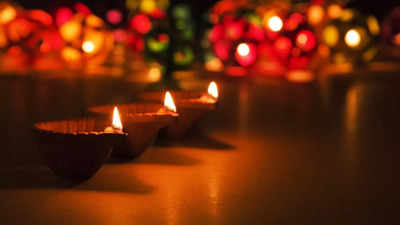Lighting the Diya according to Vastu for Deepavali: Enhancing festive energy and prosperity


The festival of lights, Deepavali (or Diwali), is a time when homes across India sparkle with the soft glow of diyas (oil lamps) symbolizing the victory of light over darkness and good over evil. Lighting diyas in a Vastu-aligned manner can amplify the festive spirit and invite positive energy, prosperity, and good health into your home. Here’s how you can make the most of this auspicious festival by following Vastu principles when lighting diyas.
Significance of Lighting Diyas During Deepavali
In Hindu tradition, lighting diyas is not just a ritual but a way to honor the goddess Lakshmi, the deity of wealth and prosperity, and Lord Ganesha, the remover of obstacles. The light of the diya symbolizes purity, knowledge, and the removal of negative energies, bringing a fresh start to the year ahead.
Vastu Tips for Placing Diyas
- Main Entrance
According to Vastu Shastra, the main entrance of a home is the primary source of energy, making it crucial for this area to be well-lit during Deepavali. Place at least two diyas on either side of the door to welcome Goddess Lakshmi. Lighting diyas near the entrance ensures the inflow of prosperity, health, and positivity into the home. - North-East Corner (Ishan Kon)
The North-East direction is considered the holiest and most auspicious corner in Vastu Shastra. Light a diya in this area to maximize positive energy and spiritual vibrations. This practice is especially beneficial in dispelling any accumulated negativity, enhancing peace, and supporting spiritual growth for the family. - Tulsi Plant
Many homes have a tulsi (holy basil) plant, a sacred addition in Hindu households. Lighting a diya near the tulsi plant is believed to attract prosperity and spiritual protection. Place the diya here each evening of Deepavali as a way to thank the plant for its protective energy and health benefits. - Living Room and Kitchen
Diyas placed in the living room and kitchen help keep the heart of the home warm, inviting, and vibrant. These spaces are often high-traffic areas where families gather, so lighting diyas here spreads positivity, unity, and happiness. In the kitchen, diyas represent the blessings for a bountiful and nourishing year ahead. - Windows and Balconies
Placing diyas on windows and balconies is a beautiful way to allow light to radiate outwards from the home. In Vastu, this symbolizes the sharing of prosperity and joy with the world. Diyas on window sills and balconies also help to welcome the energy of wealth and good fortune. - Puja Room or Altar
The puja room or altar is where the most important diyas are placed, especially during Deepavali. According to Vastu, this space should be clean and uncluttered to allow for uninterrupted divine energy. The puja room diya symbolizes reverence and devotion, connecting the household to spiritual energies.
When to Light the Diya: Choosing the Right Time
Traditionally, diyas are lit at dusk to dispel the darkness of the evening and to align with the divine energies that Vastu principles recommend inviting at this time. Lighting the diya at dusk enhances its spiritual impact and strengthens the positive energy in the home.
Types of Diyas and Their Placement
- Clay Diyas: Clay is a natural, earthy material that harmonizes well with Vastu principles. Fill them with ghee or oil and place them in the recommended directions for optimal positivity.
- Metal Diyas: Brass or copper diyas are known to amplify prosperity energy. Place metal diyas in the South or South-East direction as these align with the element of fire.
Colors and Patterns of Rangoli with Diyas
Deepavali wouldn’t be complete without a colorful rangoli to complement the diyas. According to Vastu, rangoli designs with colors like red, yellow, green, and blue invite positivity and balance. Place diyas around or within the rangoli design at the entrance for a warm, welcoming vibe.
Vastu Mistakes to Avoid When Lighting Diyas
- Avoid the South-West Direction: Diyas in the South-West may lead to an accumulation of stagnant energy. Instead, focus on lighting diyas in the North-East or East.
- Do Not Use Broken Diyas: Broken or cracked diyas are considered inauspicious. Ensure that all diyas are in good condition to invite complete positivity.
Final Thoughts
Lighting diyas according to Vastu on Deepavali can significantly enhance the festival’s sacred and joyful atmosphere. These small yet meaningful placements align with ancient traditions and bring new light into our homes and lives, creating a space that is not only welcoming for the festival but also open to the blessings of prosperity, health, and happiness throughout the year.






